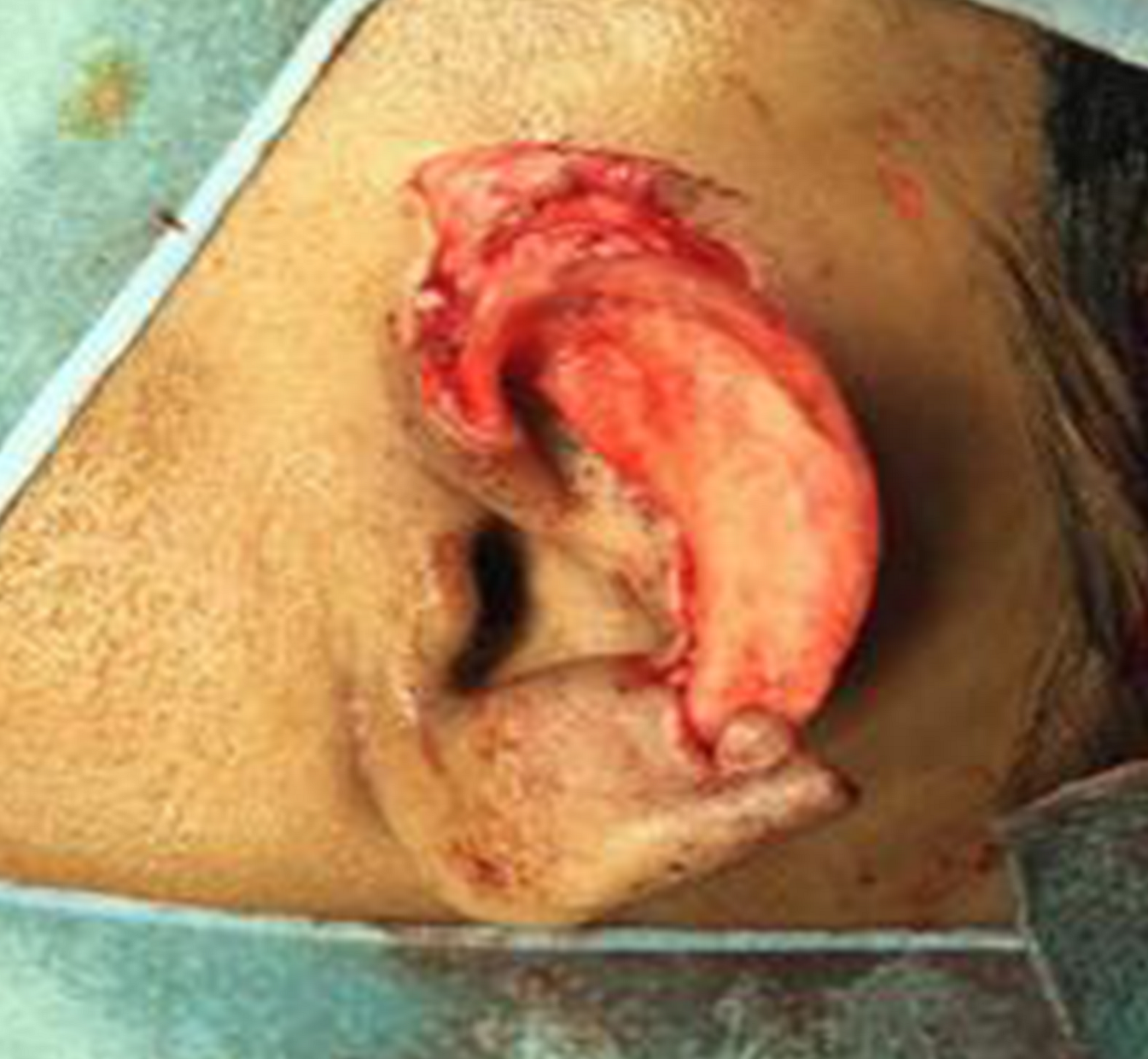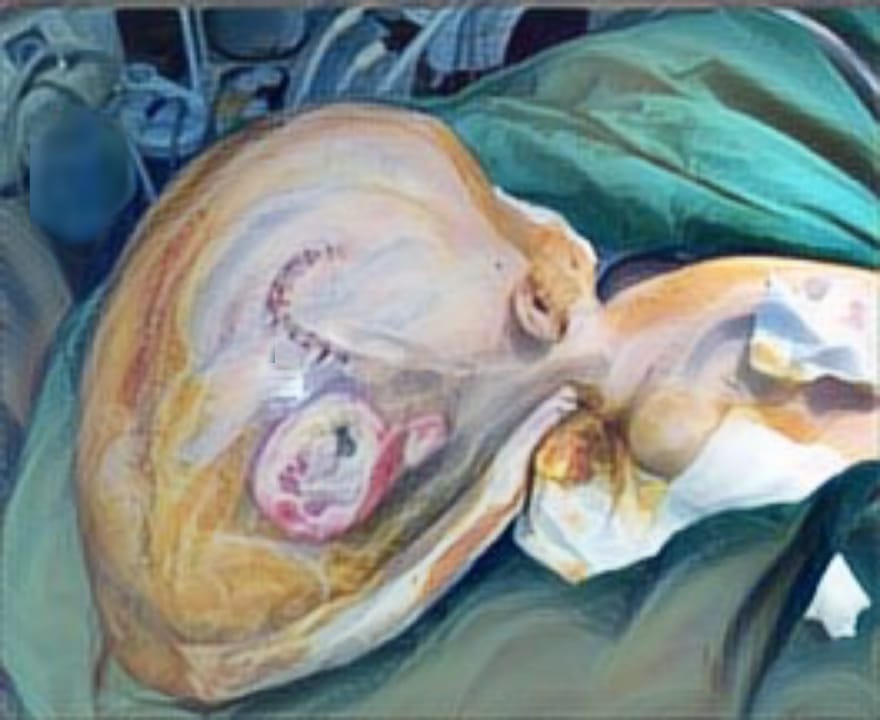A CASE REPORT: THE STAGED RETRO AURICULAR FLAPS FOR AURICLE RECONSTRUCTION AFTER TRAUMATIC AMPUTATIONS

Downloads
Highlights:
- Instances of severe ear injuries are uncommon.
- The paragraph explores the efficacy of the staged retro-auricular flap (SRF) as a proficient approach to ear reconstruction.
- SRF demonstrates the ability to successfully reinstate the ear's dimensions, contour, and functionality, yielding highly satisfactory functional and aesthetic outcomes.
Abstract:
Introduction: A complete amputation or other severe auricular injury is rare. The amputated ear also presents a significant problem for the plastic surgeon.
Case Illustration: A 29-year-old man had his left ear amputated due to trauma presented. He cut off his ear to get rid of the whisper because he has a history of psychiatric illnesses and complaints about hearing them. The remaining portion of the cartilage that was still linked to the ear attachment area was sutured to the preserved cartilage. The defect is covered using a stage pedicle flap. A skin transplant was used to close the donor flap's retro-auricular defect, which was its secondary defect.
Discussion: A random-pattern flap with an abundant vascular supply is the staged retro-auricular flap (SRF). This flap's main disadvantage is the two-stage process required to complete it. Excellent cosmetic outcomes can be achieved by matching skin color and texture well in the postauricular sulcus, mastoid area, and posterior ear.
Conclusion: SRF is an efficient ear reconstruction technique that offers relatively little operational morbidity and can restore the ear's size and shape with good to exceptional functional and cosmetic results when used on appropriately chosen helical ear abnormalities.
Magritz R & Siegert R. Reconstruction of the Avulsed Auricle after Trauma. Otolaryngol Clin North Am. 2013; 46: 841–55.
Lyu Y, Ma L, Ke C, Zhang W & Liu M. A two-stage inversion technique for total auricular reconstruction: case report and literature review. BMC Surg. 2018; 18:74.
Kyrmizakis DE, Karatzanis AD, Bourolias CA, Hadjiioannou JK & Velegrakis GA. Nonmicrosurgical reconstruction of the auricle after traumatic amputation due to human bite. Head Face Med. 2006; 2:45.
Gailey AD, Farquhar D, Clark JM & Shockley WW. Auricular avulsion injuries and reattachment techniques: A systematic review. Laryngoscope Investig Otolaryngol. 2020;5: 381–9.
Brockhoff HC & Zide M. Delayed Ear Reconstruction: Case Report of Reconstruction of an Avulsed Ear 2 Days After Injury. J Oral Maxillofac Surg. 2014; 72:1432. e1-1432.e4.
Ebrahimi A, Kazemi A, Rasouli HR, Kazemi M & Kalantar Motamedi MH. Reconstructive Surgery of Auricular Defects: An Overview. Trauma Mon [Internet]. 2015; 20(4).
Cerci FB. Staged retro-auricular flap for helical reconstruction after Mohs micrographic surgery. A Bras Dermatol. 2016; 91:144–7.
Johnson TM & Fader DJ. The staged retro-auricular to auricular direct pedicle (interpolation) flap for helical ear reconstruction. J Am Acad Dermatol. 1997; 37:975–8.
Ear | Plastic Surgery Key. Available from: https://plasticsurgerykey.com/ear/
Poissonnet, G., Poissonnet Jr, V., Dassonville, O., Bozec, A., & Culié, D. Partial central anterior reconstruction of the auricle with one-stage combined retro-auricular flaps. Plastic and Reconstructive Surgery. 2023; 10-1097.
Cerci & Felipe Bochnia. Staged retro auricular flap for helical reconstruction after Mohs micrographic surgery. Anais Brasileiros de Dermatologia, 2016, 91: 144-147.
Yotsuyanagi, T., Watanabe, Y., Yamashita, K., Urushidate, S., Yokoi, K., & Sawada, Y. retroauricular flap: its clinical application and safety. British Journal of plastic surgery. 2001; 54:12-19.
Copyright (c) 2023 Alexandria Stephanie Suparman, Doni Setiawan, Yugos Juli Fitra

This work is licensed under a Creative Commons Attribution-ShareAlike 4.0 International License.
JURNAL REKONSTRUKSI DAN ESTETIK by Unair is licensed under a Creative Commons Attribution-ShareAlike 4.0 International License.
- The journal allows the author to hold copyright of the article without restriction
- The journal allows the author(s) to retain publishing rights without restrictions.
- The legal formal aspect of journal publication accessbility refers to Creative Commons Attribution Share-Alike (CC BY-SA)




















